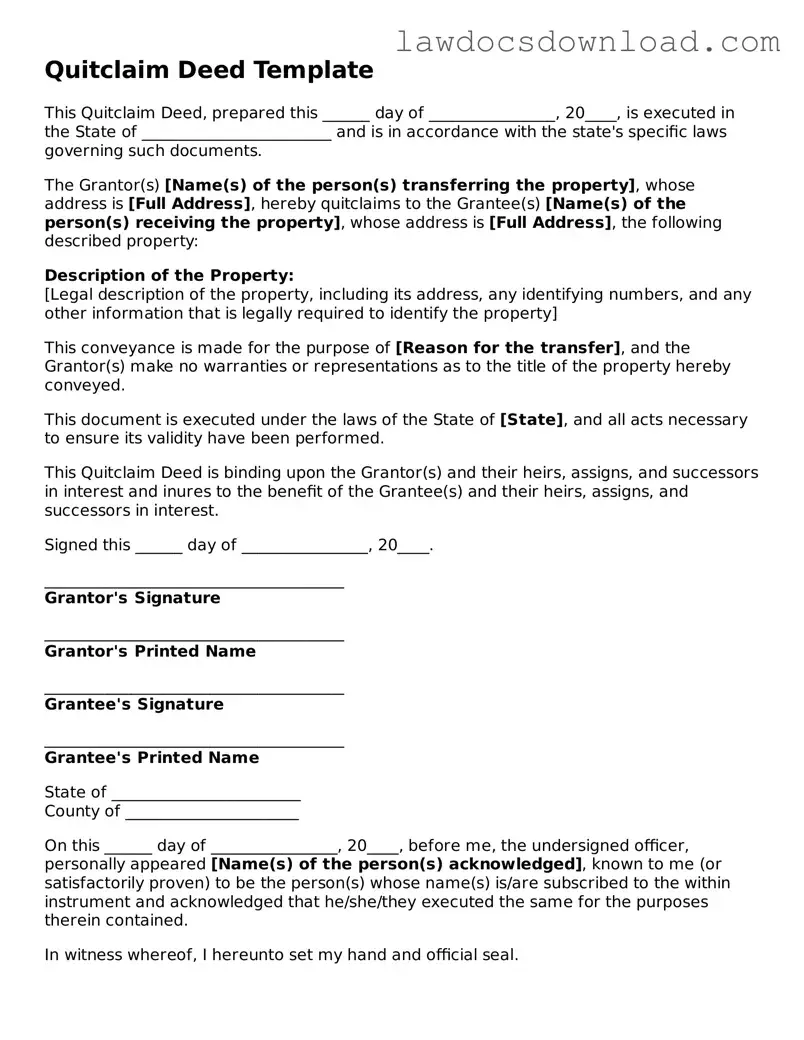Quitclaim Deed Template
This Quitclaim Deed, prepared this ______ day of ________________, 20____, is executed in the State of ________________________ and is in accordance with the state's specific laws governing such documents.
The Grantor(s) [Name(s) of the person(s) transferring the property], whose address is [Full Address], hereby quitclaims to the Grantee(s) [Name(s) of the person(s) receiving the property], whose address is [Full Address], the following described property:
Description of the Property:
[Legal description of the property, including its address, any identifying numbers, and any other information that is legally required to identify the property]
This conveyance is made for the purpose of [Reason for the transfer], and the Grantor(s) make no warranties or representations as to the title of the property hereby conveyed.
This document is executed under the laws of the State of [State], and all acts necessary to ensure its validity have been performed.
This Quitclaim Deed is binding upon the Grantor(s) and their heirs, assigns, and successors in interest and inures to the benefit of the Grantee(s) and their heirs, assigns, and successors in interest.
Signed this ______ day of ________________, 20____.
______________________________________
Grantor's Signature
______________________________________
Grantor's Printed Name
______________________________________
Grantee's Signature
______________________________________
Grantee's Printed Name
State of ________________________
County of ______________________
On this ______ day of ________________, 20____, before me, the undersigned officer, personally appeared [Name(s) of the person(s) acknowledged], known to me (or satisfactorily proven) to be the person(s) whose name(s) is/are subscribed to the within instrument and acknowledged that he/she/they executed the same for the purposes therein contained.
In witness whereof, I hereunto set my hand and official seal.
______________________________________
Notary's Signature
______________________________________
Notary's Printed Name
My Commission Expires: ______________________
